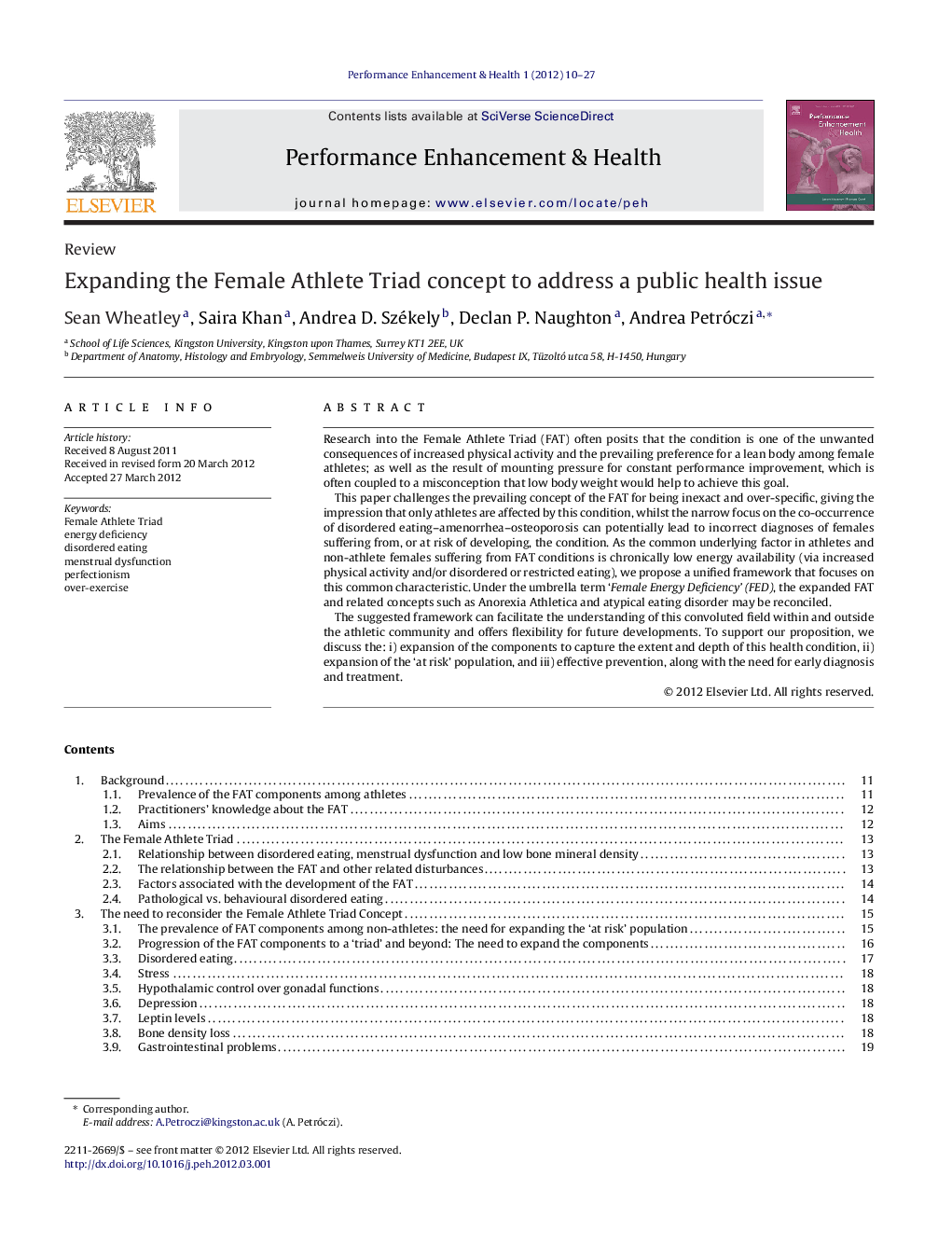| Article ID | Journal | Published Year | Pages | File Type |
|---|---|---|---|---|
| 889559 | Performance Enhancement & Health | 2012 | 18 Pages |
Research into the Female Athlete Triad (FAT) often posits that the condition is one of the unwanted consequences of increased physical activity and the prevailing preference for a lean body among female athletes; as well as the result of mounting pressure for constant performance improvement, which is often coupled to a misconception that low body weight would help to achieve this goal.This paper challenges the prevailing concept of the FAT for being inexact and over-specific, giving the impression that only athletes are affected by this condition, whilst the narrow focus on the co-occurrence of disordered eating–amenorrhea–osteoporosis can potentially lead to incorrect diagnoses of females suffering from, or at risk of developing, the condition. As the common underlying factor in athletes and non-athlete females suffering from FAT conditions is chronically low energy availability (via increased physical activity and/or disordered or restricted eating), we propose a unified framework that focuses on this common characteristic. Under the umbrella term ‘Female Energy Deficiency’ (FED), the expanded FAT and related concepts such as Anorexia Athletica and atypical eating disorder may be reconciled.The suggested framework can facilitate the understanding of this convoluted field within and outside the athletic community and offers flexibility for future developments. To support our proposition, we discuss the: i) expansion of the components to capture the extent and depth of this health condition, ii) expansion of the ‘at risk’ population, and iii) effective prevention, along with the need for early diagnosis and treatment.
► This paper challenges the prevailing concept of the Female Athlete Triad for being inaccurate and over-specific ► A unified framework, Female Energy Deficiency (FED), is suggested to capture the extent and depth of this health condition ► The FED can reconcile the existing terminologies and facilitate changing the way this health condition is viewed ► The FED affords the necessary flexibility for expansion, along with facilitating early detection and effective prevention
